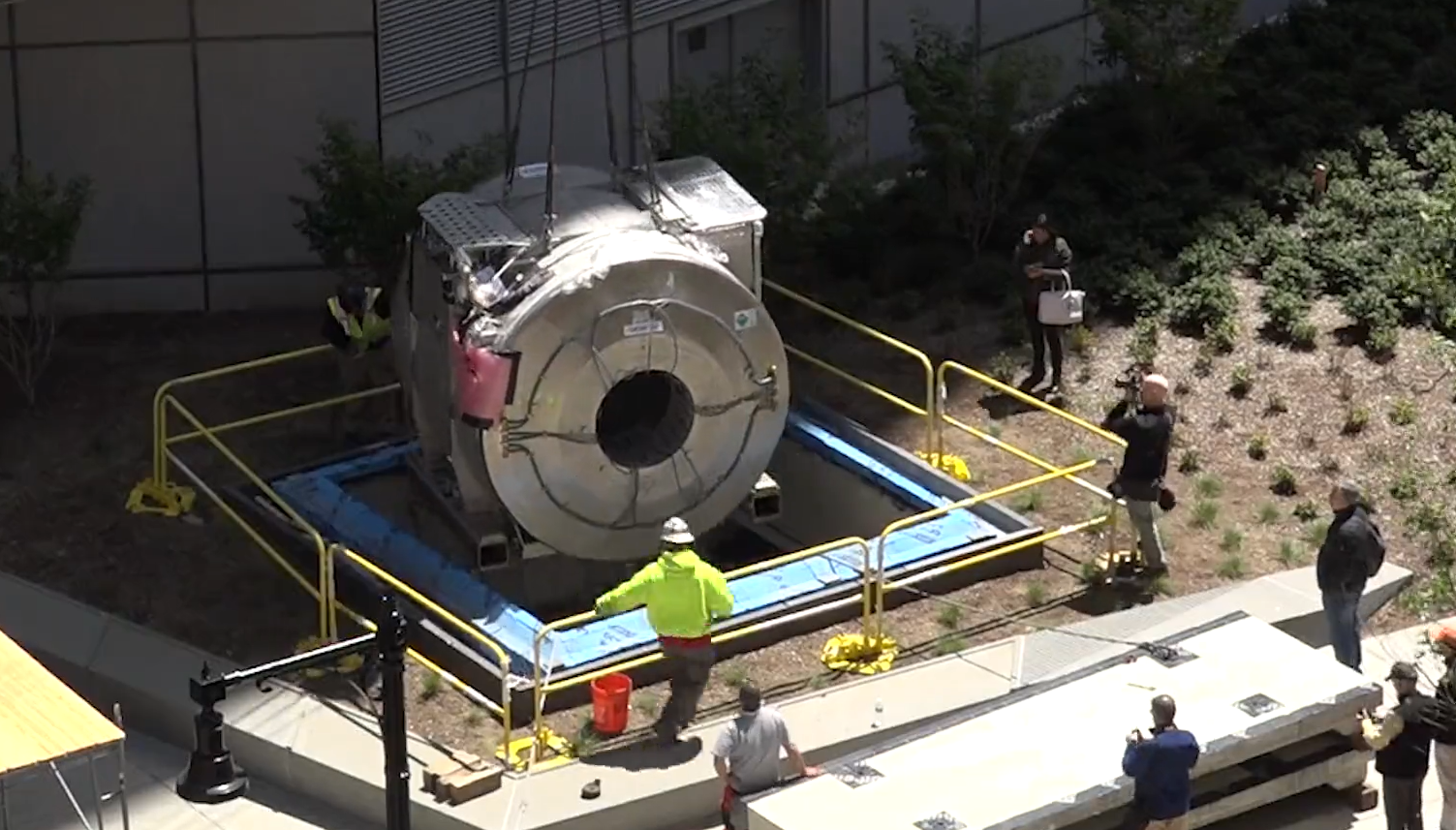The most powerful MRI in North America has arrived at the Brigham

Watch the installation of the 7.0T
A 7 Tesla (7.0T) magnetic resonance imaging (MRI) scanner weighing almost 25 tons was recently added to the Marriott Family Imaging Suite in the Building for Transformative Medicine. Watch a time-lapse video of the machine’s arrival and installation.
The 7.0T magnetic resonance imaging scanner is part of a new generation of ultra-high field MRI instruments and one of the first to be installed in a clinical setting for future clinical use.
Brigham and Women’s Hospital recently installed the 7 Tesla (7.0T), one of the most powerful commercially available MRI machines in the world, in its Building for Transformative Medicine. The scanner is part of a new generation of ultra-high field magnetic resonance imaging (MRI) instruments and one of the first to be installed in a clinical setting for future clinical use. Following federal and state approval, the 7.0T will offer clinical insights that have not been possible until now, focusing on neurodegenerative and musculoskeletal diseases.
“Images from the new scanner will provide greater specificity for earlier diagnosis and more precise treatment, particularly for patients with neurodegenerative diseases like multiple sclerosis and epilepsy, and musculoskeletal conditions that involve the cartilage, muscle, and fascia of the knee joint,” said Srinivasan Mukundan Jr., MD, PhD, medical director of Magnetic Resonance Imaging at BWH.
Weighing almost 25 tons, the 7.0T is more than double the strength of the current state-of-the-art 3.0T MRI scanners that are now widely in clinical use. The higher field strength means a better signal and higher-resolution images of brain structures and irregularities, as well as the musculoskeletal system. When cleared for clinical use by the U.S. Food and Drug Administration, the 7.0T will be the most powerful MRI scanner available for patient use.
“Once approved for clinical use, the 7.0T will allow clinicians to visualize critical structures and pathologies of the brain that until now were not visible by MRI. These images will help clinicians differentiate between different diseases or conditions in which symptoms may be similar, and help provide evidence for choosing the best treatment option and perhaps monitoring the effectiveness of a course of treatment,” Mukundan said.
The 7.0T was lowered by crane into the Building for Transformative Medicine through a specially designed access hatch to a loading platform below. It was then moved through a hold, and slowly pushed down the service corridor, a process that took several hours. The Building for Transformative Medicine, which opened to patients in October 2016, is designed to accelerate the translation of science into the clinical setting and bring cutting-edge innovation and treatments to patients. The building includes an imaging floor especially designed and constructed to accommodate installation of new imaging devices, including the 7.0T, and allows for removal of MRI equipment for upgrades and repair.
RELATED ARTICLES:
BWH Translational Accelerator Powers Up
Artificial Intelligence in Health Care
First Patients Seen in New Building for Transformative Medicine